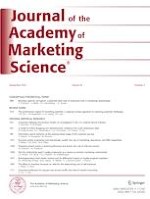22.03.2022 | Original Empirical Research
A model of online shopping cart abandonment: evidence from e-tail clickstream data
Erschienen in: Journal of the Academy of Marketing Science | Ausgabe 5/2022
EinloggenAktivieren Sie unsere intelligente Suche, um passende Fachinhalte oder Patente zu finden.
Wählen Sie Textabschnitte aus um mit Künstlicher Intelligenz passenden Patente zu finden. powered by
Markieren Sie Textabschnitte, um KI-gestützt weitere passende Inhalte zu finden. powered by
